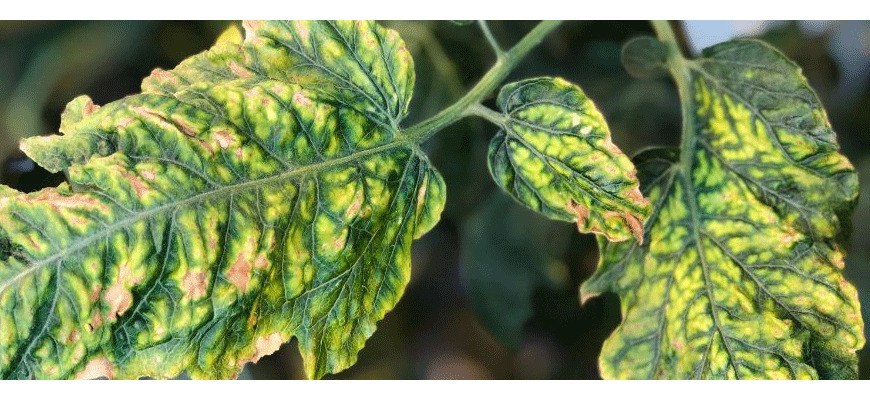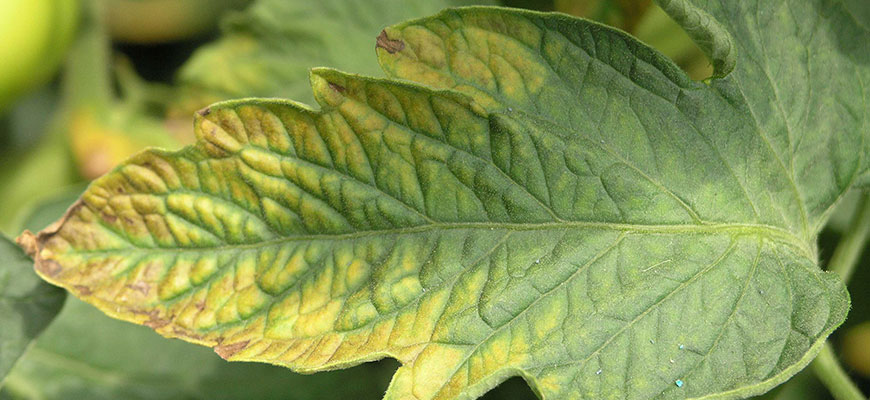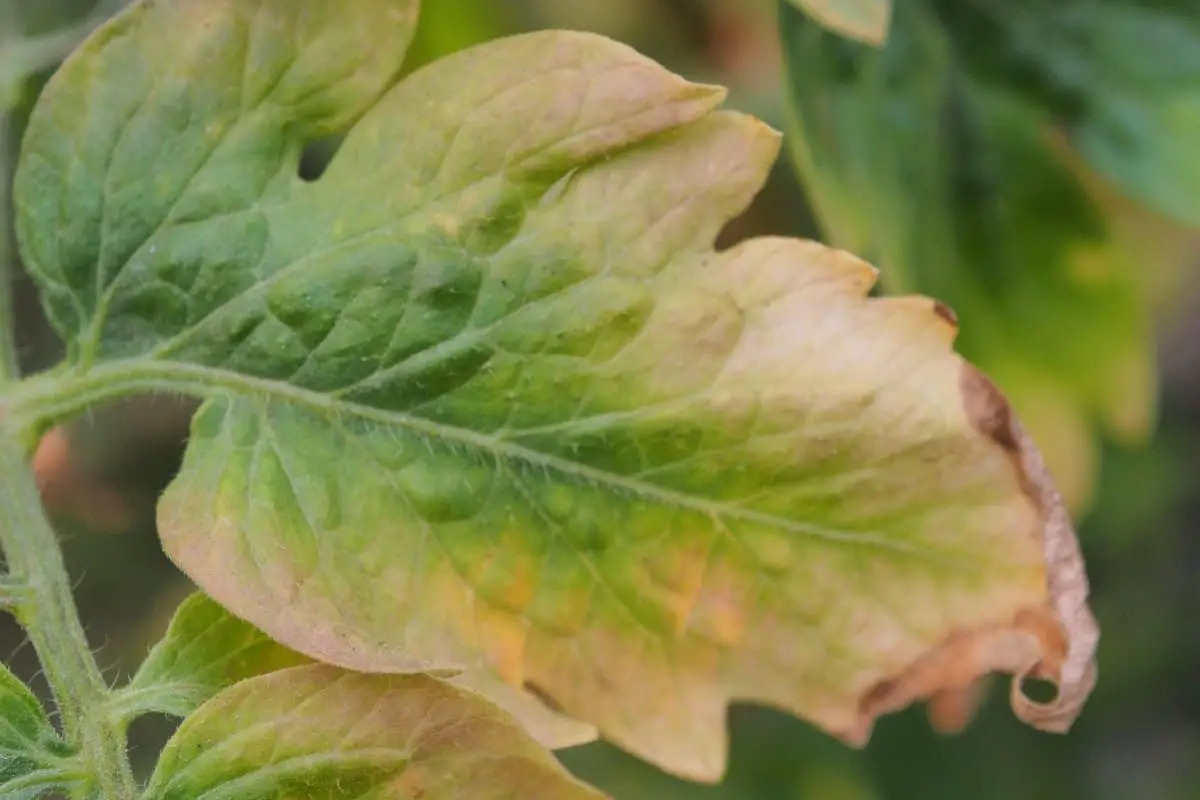How To Recognize and Fix Nutrient Burn
Nutrient burn is a common problem among gardeners, particularly those growing plants in hydroponic systems. It occurs when the plant receives too much of certain nutrients, resulting in yellowing and browning of the leaves and stunted growth.
Nutrient burn can be caused by using too much fertilizer or feeding the plants too often, or by using water with an incorrect pH balance. To diagnose nutrient burn, inspect your plants for signs of yellowing or browning on the edges and tips of the damaged leaves, as well as stunted growth stage.
If you suspect nutrient burn, stop fertilizing and flush out the system with clean water to reduce salt buildup. Make sure to adjust the pH accordingly before adding new nutrients.
Causes of Nutrient Burn
The exact cause of plant nutrient burn can be difficult to pinpoint, but it is generally caused by providing too much or too little of certain essential nutrients. A high concentration of fertilizer in the soil or water can result in an overload of nutrients that the plant cannot process properly.
Additionally, incorrect pH balance can prevent the plant from being able to absorb certain minerals and cause nutrient burn. Poor air circulation, excessively warm temperatures, and low humidity levels can also contribute to nutrient burn as they all interfere with the plant’s ability to take up necessary nutrients.
Finally, overwatering or using water with high levels of chlorine or organic matter may also lead to nutrient burn.
Symptoms of Nutrient Burn
Nutrient burn symptoms vary depending on the type of plant and the particular nutrient deficiency. Common symptoms include yellowing of leaves, brown spots on the leaves, curled or distorted foliage, weak stems, stunted growth, wilting and even death if not treated in time.
In some cases, an entire side of a plant can be affected while other parts remain healthy. To confirm nutrient burn as the cause of these symptoms, it is important to test the soil or water for mineral composition and pH balance. If nutrient levels are too low or too high then this could be causing the problem.
Excess Nutrients
Excess nutrients can cause serious problems for plants, leading to a condition known as nutrient burn. Symptoms of excess nutrients include rapid growth and yellowing of leaves, brown spots on the leaves, curled or distorted foliage, weak stems, stunted growth and wilting.
Leaves may also become discolored or brittle. In some cases, an entire side of the plant can be affected while other parts remain healthy. Excess nutrition can occur when fertilizer is used in incorrect amounts or when it is applied too frequently. It can also be caused by runoff from animal waste or septic tanks.
To prevent nutrient burn and keep your plants healthy, always follow recommended application rates of fertilizer and adjust according to soil tests. Also avoid over-watering as this can reduce oxygen levels in the soil which can lead to unhealthy conditions for the plant's roots.
Additionally consider using natural fertilizers such as compost or manure instead of chemical ones if possible, as these will provide more balanced nutrition for your plants without risking excess application.
Identifying Excessive Nutrients
Identifying excessive nutrients in your plants can be difficult, but there are some common signs to look for. When you see green leaves that are yellowing or turning brown, this could indicate an excess of nitrogen, phosphorus or potassium.
Healthy leaves may also become discolored, curled or distorted if too much fertilizer has been applied. Stunted growth and wilting can also be a sign of too much nutrition in the soil as well as weak stems. If you notice any of these symptoms in your plants it is important to take action immediately to prevent further damage.
Reducing Excessive Nutrients
Reducing excessive nutrients is an important part of maintaining a healthy garden. The best way to do this is by following recommended application rates for fertilizer and adjusting according to soil tests.
Additionally, consider using natural fertilizers like compost or manure instead of chemical ones as they provide more balanced nutrition without risking excess application. It's also important to ensure your plants are getting the right amount of water as overwatering can reduce oxygen levels in the soil and lead to unhealthy conditions for the plant roots.
Finally, be sure to check your plants regularly for signs of nutrient burn such as yellowing or brown leaves, discoloration, wilting, and stunted growth. If you notice any of these symptoms it is important to take action immediately in order to prevent further damage!
Deficiency in Nutrients
Nutrient deficiency is a common problem in gardens and can be caused by several factors, including inadequate soil nutrients, too much water, or incorrect pH levels. Common signs of nutrient deficiency include yellowing of the leaves, stunted growth, and wilting. It’s important to take action immediately if you notice any of these signs in your plants.
The best way to treat nutrient deficiency is to adjust your fertilization routine according to soil tests and use natural fertilizers such as compost or manure instead of chemical ones for a more balanced nutrition.
Additionally, check your plants regularly for signs of overwatering and ensure the soil pH level is suitable for the type of plant you are growing. With these simple steps you can keep your garden healthy and free from nutrient deficiencies!
Signs of a Nutrient Deficiency
Nutrient deficiency is a common problem in gardens, and it can be caused by several different factors. The most common signs of a nutrient deficiency are yellowing of the leaves, stunted growth, and wilting.
If you notice any of these signs in your plants, it's important to take action immediately. You should first adjust your fertilization routine according to soil tests and use natural fertilizers like compost or manure instead of chemical ones for a more balanced nutrition.
Additionally, check your plants regularly for signs of overwatering and make sure the soil pH level is suitable for the type of plant you're growing. With these steps, you can keep your garden healthy and free from nutrient deficiencies!
Troubleshooting a Deficiency in Nutrients
Troubleshooting a deficiency in nutrients can be tricky, but it's important to take the necessary steps to get your garden back on track. The first step is to identify which nutrient is lacking in your soil. This will require you to have a soil test done, as well as monitor your plants for signs of nutrient deficiency (yellow leaves, stunted growth, wilting).
Once you've identified the nutrient deficiency, you'll need to adjust your fertilization routine accordingly and use natural fertilizers like compost or manure instead of chemical ones. Additionally, make sure that you're not overwatering and check the pH level of the soil to ensure it's suitable for the type of plant you're growing. With these steps, you can help restore balance in your garden and keep it healthy!
Balanced Water and Fresh Water Requirements
Balanced water and fresh water requirements are essential to ensure the health of your plants. Water is essential for photosynthesis and other essential processes that help your plants thrive. When it comes to balanced water, it's important to make sure you are providing enough moisture so that the roots can absorb what they need while also draining excess away.
Fresh water requirements involve changing out your reservoirs or adding new ones at least once a month, depending on how often you're watering your plants. This helps prevent disease-causing organisms from building up in stagnant water and keeps your plants healthy.
Additionally, it's important to check the pH levels in the soil and adjust accordingly with fertilizers or natural amendments if necessary. With proper maintenance of balanced and fresh water requirements, you can keep your garden thriving!
Role of Balanced Water in Plant Growth & Health
The role of balanced water in plant growth and health is essential for optimal results. Balanced water helps to ensure that the soil remains moist, allowing the roots to absorb the necessary nutrients from the soil and reducing stress on the plant.
Benefits of Using Fresh Water for Plants
Fresh water is an essential part of plant growth and health. It helps to provide essential nutrients, keeps the soil moist, and helps to maintain a healthy pH balance within the soil. The use of fresh water for your plants can also help to reduce mineral build-up in the soil which can cause nutrient deficiencies and other problems.
pH-Balanced Water Requirements
The pH level of water is an important factor to consider when caring for your plants. Water that is too acidic or alkaline can cause nutrient deficiencies and other problems. The ideal pH level for a plant's water should be around 6.5 to 7.0, which is slightly acidic.
The pH of the soil should also match the water so it is important to test both levels regularly. If either the water or soil has a higher or lower pH than desired, you can use either a pH buffer such as lime or sulfur to adjust the levels accordingly. Additionally, you may want to consider adding fertilizers and supplements to ensure the plant gets all of its essential macro- and micronutrients even if the soil lacks them.
With proper testing and adjustment of both the water and soil, you will be able to provide your plants with the optimal environment for growth and health, ensuring they get all of their nutrient needs met without any risk of nutrient burn or other issues caused by incorrect pH levels in either the water or soil.
How to Achieve the Right pH-Balance in Water?
Achieving the right pH-balance in water is essential to the health of your plants. It's important to test the pH of both water and soil regularly to make sure they are within the optimal range (6.5-7.0). If either is higher or lower than desired, you can use a pH buffer like lime or sulfur to adjust it accordingly.
Level of Nutrients Required for Healthy Growth
Having the right level of nutrients is essential for healthy plant growth. The best way to ensure that your plants are getting their required nutrients is through soil testing and regular fertilization. Different types of plants require different levels of nutrients, so it's important to know what's needed for specific species before applying them. Generally, most plants need nitrogen, phosphorus, and potassium in order to thrive.
Tips on Adjusting the Level of Nutrients for Healthy Growth
Once you have the right level of nutrients for your plants, it's important to adjust them as needed to keep them healthy. This can be a tricky process, so here are some tips on adjusting the level of nutrients for optimal growth:
First, monitor the soil pH levels and make sure they remain within the range that is best suited for your plants. Regular testing will help you determine when changes need to be made.
Next, adjust your fertilization schedule according to what your plants require. If one nutrient is getting used up faster than others, increase its frequency or amount in subsequent applications. Conversely, if one nutrient is building up too quickly and causing problems such as nutrient burn, reduce its frequency or amount accordingly.
Finally, use organic fertilizers whenever possible and avoid overfertilizing altogether. Too much fertilizer can cause unhealthy build-ups of certain nutrients and lead to problems like nutrient burn. Organic fertilizers provide slow-release nutrition that can help prevent this issue without risking any harm to your plants.
Fertilizer Burn Symptoms and Prevention
Fertilizer burn is a common problem for gardeners, but it can be prevented. Symptoms of fertilizer burn include yellow or browning leaves, wilting, and stunted growth. To prevent fertilizer burn, it is important to use the right amount of fertilizer for your plants. If you are unsure how much to use, refer to the instructions on the package.
Additionally, you should avoid applying too much nitrogen-rich fertilizer in one application as this can lead to an overabundance of nutrients that can damage the plant's roots.
Finally, always water your plants after fertilizing as this helps flush away any excess nutrients and prevents them from building up in the soil. With these tips in mind, you can ensure that your plants stay healthy and vibrant all season long!
Recognizing Fertilizer Burn Symptoms
Recognizing fertilizer burn symptoms is important for gardeners. The most common signs include yellow or browning leaves, wilting, and stunted growth. If your plants are exhibiting any of these signs, it is likely due to an overabundance of nutrient solution in the soil.
To prevent fertilizer burn, you should use the right amount of fertilizer for your plants based on the instructions on the package. Additionally, be sure to avoid applying too much nitrogen-rich fertilizer in one application as this can cause damage to the root system.
Lastly, always water your plants after fertilizing as this helps flush away any excess nutrients from the soil and prevents them from building up over time. With these tips in mind, you can keep your plants healthy and vibrant all season long!













